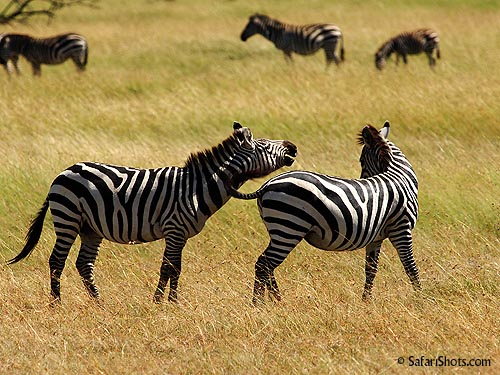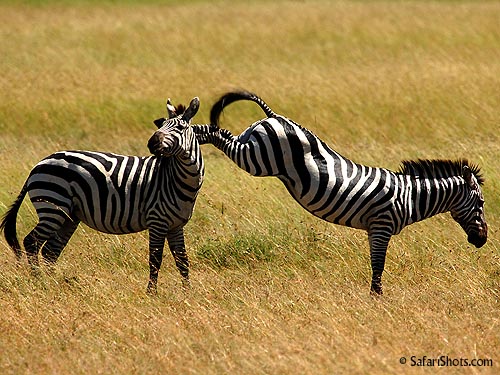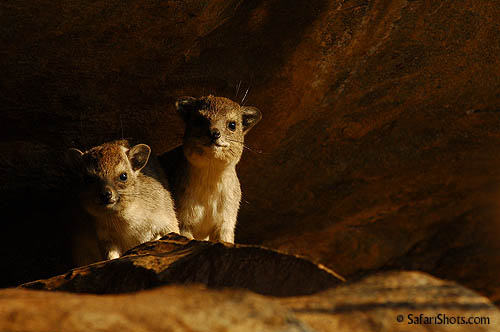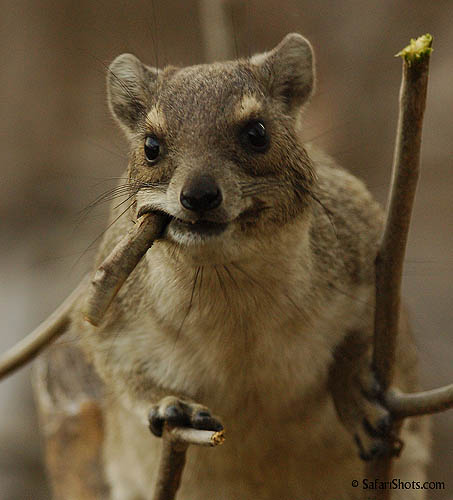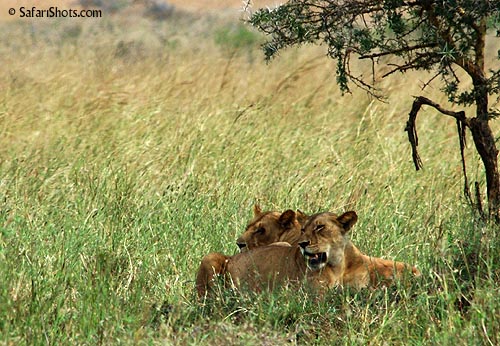|
|
|||||
|
Tourist Attention Span Text and Photos
by Jon Hill, August 2005 As I write this, I'm just finishing a six week trip to Tanzania. I came to do photography for a safari company and to pursue my own love of wildlife photography. I joined a several groups of tourists from many countries on game drives during my stay. It's very interesting to observe the progression of attitudes toward certain species of animal that most first-time visitors seem to exhibit. At the first, usually distant and brush-obscurred, sighting of a zebra, the binoculars and cameras come out quickly. A roll of film and a few gasps of amazement later, the driver pulls away with the guests still craning their necks for a last look. It's fun to see this sort of enthusiasm for wildlife... but sadly it often fades. By the fifth viewing of zebra, usually at far closer range, with an unobstructed foreground and a beautiful backdrop, the guests don't say anything, much less reach for their camera. Sometimes they say, "Oh, it's just another zebra." If the guide stops, there are moments when I'm sure someone will start tapping their foot impatiently. Is it because zebras are ugly? No. Is it because they are boring? Maybe. Is it because they are not one of the Big Five? Possibly, but a hunter's list of dangerous animals is a pathetic reason to lose interest.
As a science teacher, I'm increasingly faced with students who find my subjects boring. This problem seems to be partly due to the ways students entertain themselves. It's got to be fast-paced, interactive, finger-on-the-trigger, and sexy to have a chance to keeping a teenager engaged. Some tourists seem to be of a similar mindset. I suppose they are impatient because they want to see big cats before their expensive holiday is over, but even after they've seen their lions and leopards they seem unwilling to sit and watch zebras for any length of time. I've even seen this attitude toward elephants and lions. "Um, we've seen lions already... can we please move on? You still haven't taken us to the cheetahs yet." It must drive the guides crazy. To be fair, I went through a similar progression, and, even after all my safari experiences, I'm still much quicker to grab my camera for a lion than for a zebra. And I have many more photos of lions than zebras in my current collection. But this is changing. Over time I'm coming to appreciate those animals not on the Big Five list more and more. I'm watching them with renewed interest and am making what I feel are some compelling photos... if I'm willing to give the animals the time they deserve.
I asked a friend who has been guiding in Ruaha National Park for 19 years what his favorite animal was. I expected him to say leopard or maybe elephant, but he instantly said "warthog". He loves the way they dig with their noses and eat while walking on their knees. He is fascinated that such an ugly animal can have have long flowing hair. He thinks it's funny they way they run with their tails straight up in the air like flags on ATVs. He can talk at length about all the crazy things they do and the entertaining habits they have. Hmmm... where is this article going... I guess I'm trying to encourage guests to game parks to leave their preconceptions and lists at the gate. Your safari isn't a failure if you haven't seen the Big Five. The same guide I mentioned above tries to make a point of this by introducing guests to the Small Five: the Buffalo Weaver (a bird), the Elephant Shrew, the Ant Lion (an insect), the Rhinoceros Beetle, and the Leopard Tortoise. There are a lot of wonderful things to discover through patience, careful observation, and an open mind. Encourage your guide to tell you about birds and insects on your game drives. You'll be rewarded with a happier guide (if he is a good one) and a more unique safari experience.
A great example of a seemingly unlikely animal to find fascinating is the Rock Hyrax, aka Dassie, aka Pimbie. These small mammals are the closest living relative to the elephant! They live on rocks and in trees which become stained with brown streaks of hyrax urine. They have an interesting social structure and a naturally paranoid demeanor (you would too if you were a favorite food of various eagles and leopards). At the slightest hint of danger, one hyrax will send a shrill warning call and all in earshot will vanish into cracks in the rocks. Soon a few braver individuals will venture forth to keep an eye on the percieved danger. They are adept climbers and will climb to the farthest reaches of thin branches to collect seeds and to eat the tender tips of new growth. Hyraxes can become accustomed to people and will provide hours of entertainment around lodges and safari camps. Compare the photos of the hyraxes below to the typical view tourists get of a lion. Which do you find more interesting?
|
|||||
|
|
|||||
|
All images in this site are copyrighted. Do not copy or use without permission. |
|||||

